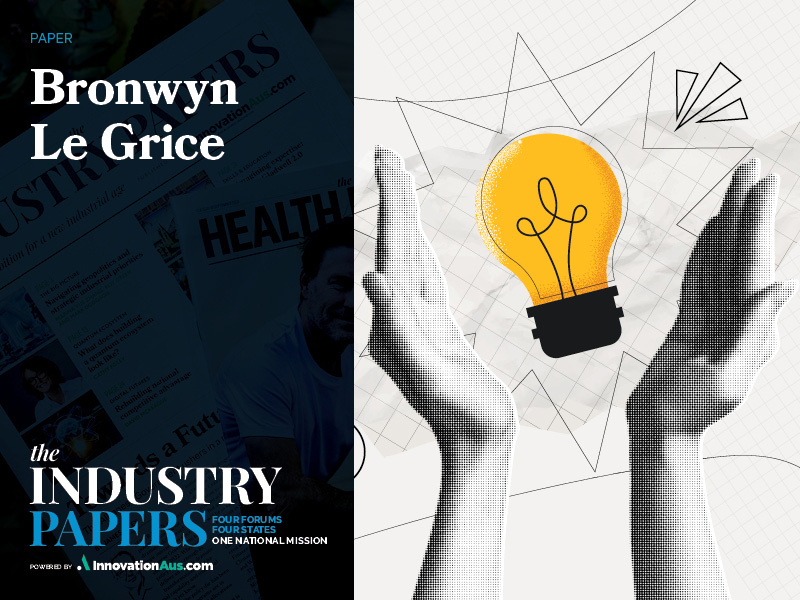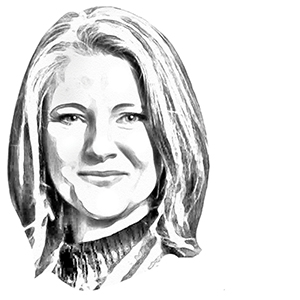One of the most cited comments on Australia’s STEM industries is our strength in science, and our lack of strength in commercialisation. This claim is not without foundation. In the Global Innovation Index, Australian ranks twenty-fourth out of 132 economies, a position which has been relatively stagnant over several years.
But is it really as dire as commentators say? And if it is, how do we right our course, because it is certain that STEM and knowledge-based industries will be the iron ore of our children’s future, and without them, our position as one of the wealthiest countries on earth is under threat.

Over the years, Australian medical science discoveries have helped millions of people hear better (Cochlear implant), sleep better (CPAP machines), avoid cancer (cervical cancer vaccine), plus countless other examples.
Our prowess in health and medical research is indisputable. According to Nature Index, Australia ranks twelfth globally for publishing high-quality scientific research and eighth for health sciences.
Innovation and funding structures such as the National Reconstruction Fund and the Industry Growth Program outline a course to increase Australian investment into commercialising advances in medical science and other priority areas. They are part of an ambitious plan to create a fresh pipeline of innovations that will pave the way for others, and which could potentially see the development of Australia’s next Cochlear, CSL or ResMed.
However, it’s clear that this is not a problem that is easily solved. The dialogue about “Why are we so great at science and so poor at commercialisation?” has been the soundtrack to my more than twenty years in the health technologies arena.
To harness the ingenuity of government, industry and innovators and connect the dots with our leading research institutions, the policy settings must be exact, the strategy must be clear, and we need to be brave in confronting the fact that what we have done in the past has not worked.
Visiting economics superstar Mariana Mazzucato noted that creating a “mission-led” economy is about seeking outcomes, not output, an aim which requires “bold action” on the part of government with risk-taking and innovation at its heart.
Referencing the Apollo mission, she spoke about public policy shifting from being reactive to proactive, with “clear, inspirational and bold” missions in which government leads in a way which coalesces private industry around the core mission, leading to innovation and outcomes where government and industry share in both risk and reward.
One of the most challenging components of Professor Mazzucato’s mission-led approach is the need for policy makers to do things differently, and to be prepared to take risk, and ultimately to lose money.
In Australia, we don’t often reward those who do things differently. In our dialogues at every level of government, we often still focus on commercialisation as an output from research and academic institutions, not the ability of all our innovators to take novel, high-impact ideas and put them in the hands of end-users. So how do we flip that belief on its head and start looking at commercialisation through a lens of outcome, not output?
Australia’s chief scientist Cathy Foley said in 2023, “SMEs are the engine room of our economy” but many SMEs may not originate in academic and research institutions. Many of the inspirational founders and executives in Australia’s digital and connected health sector may not work in (and may never have worked in) a research organisation.
In fact, many of them may not be scientists at all, but this does not in any way take away from the fact that some of those innovators are impacting tens of thousands of patients or consumers around the globe, and changing the economics of health conditions which place a growing burden on our economies.
While we continue to view commercialisation as an output of scientific research – versus the outcomes achieved by all innovators through successfully taking bold, new ideas through complex pathways to market – we will struggle to make headway and we will continue to start every innovation conversation with “we are great at science and terrible at commercialisation.”
ANDHealth came from a sense of frustration that we did not do things differently.
In 2017, software-based and software-enabled medical technologies were either “just Medtech” or “just tech applied to health” and digital health was considered, in Australia, as simply the “digitisation of medical information”.
The country was awash with accelerators claiming to be the next Y-Combinator, taking significant equity stakes (in some cases up to thirty per cent) of promising startups in consideration of a future benefit, via coaching, mentoring and access to investors. In many cases they had no track record of adding value and successfully supporting company growth.
ANDHealth did none of the usual things, no equity required, no standardised curriculum and no claims about being Australia’s version of Silicon Valley’s top accelerator.
What it did do is look at the sheer complexity of developing, proving, and deploying clinical-grade software-based and software-enabled medical technologies into global markets. It then went out to industry and built an industry-led model, which leverages the collective skills of a multi-disciplinary and multi-sectoral cooperative and wraps them around our most exciting innovators and SMEs, regardless of where they come from.
Rather than taking equity based on a universal valuation and delivering a standardised curriculum, ANDHealth took the approach that equity is a barrier to frank and fearless advice and support, and that the best “program” for any company is one which is tailored to their specific company, technology, market, and end-user profile.
Reflecting on the adage that “those that can’t do, teach”, we deployed a model which is centred in the premise of “if you haven’t done it, you can’t teach it”, bringing experts, entrepreneurs, industry professionals and investors from all over the globe to support our companies.
LEK Consulting recently put this model to the test. They found that digital health companies which participated in ANDHealth’s flagship ANDHealth+ program raised twice as much capital than those that didn’t.
For every dollar invested into companies and program management via ANDHealth+, $19.70 in capital was raised and $4.20 in gross economic value was delivered.
Most interestingly, when compared to other leading accelerator and incubator models in Australia, across technology and health, ANDHealth+ companies raised up to 2.5–13 times more capital, created 1.6–4.7 times more jobs, and generated 2.2–2.9 times more revenue.
This model is one which could be easily deployed across every single priority area of the National Reconstruction Fund. It coalesces business investment into research, development and commercialisation, around significant investment from the Medical Research Future Fund Commercialisation Initiative, to deliver outcomes, not output, and to fulfill our mission of accelerating the commercialisation of Australian evidence-based digital health technologies.
To quote Professor Mazzucato, “We need to scale up the partnerships that work and scale down those that don’t.” There is an overwhelming need for us to learn from each other and then scale, not reinvent the wheel.
I will always advocate for Australia’s innovators and their immense capability and potential to deliver global health outcomes through commercialisation.
However, funding for enabling organisations, such as ANDHealth and others, which are building deep pools of specialised commercialisation capability, remains fragmented, short term and highly limited in scope.
In many cases our big commercialisation policy initiatives focus on improving commercialisation outputs from our scientific community, instead of looking for innovators – from anywhere – that can deliver real world outcomes that change the lives of everyday Australians.
It’s not too late. The Southeast Asia, East Asia, and Oceania (SEAO) regions continue to close the innovation performance gap with Northern America and Europe.
Australia already has many of the building blocks in place, if only we are prepared to recognise and reward approaches that are different to those we have used before, and to those used in other countries.
We need to recognise, reward, and scale our uniquely Australian capabilities, because we are unique, and we need to be bold and take risks, because if we don’t, we put our future in jeopardy.
What is clear is that doing the same things and expecting a different result is not working for us. We need policy which drives a coalition of the willing, where public policy coalesces industry participation and investment around a clear, inspirational, and bold mission to demonstrate what we all believe, that Australia can be one of the most successful innovation nations on the planet.
Bronwyn Le Grice, CEO and managing director, ANDHealth. Bronwyn has more than twenty years’ executive experience in health technology commercialisation, venture capital, capital raising and industry advocacy. In 2017 she founded ANDHealth, an organisation that supports digital health companies in Australia by providing education, resources, non-dilutive funding and mentorship to help them navigate the complexities of the healthcare industry. Bronwyn is a non-executive director of Lumos Diagnostics Ltd. She was also a member of the National Health & Medical Research Council for the 2021-2024 Triennium.
This article is part of The Industry Papers publication by InnovationAus.com. Order your hard copy here. 36 Papers, 48 Authors, 65,000 words, 72 page tabloid newspaper + 32 page insert magazine.
The Industry Papers is a big undertaking and would not be possible without the assistance of our valued sponsors. InnovationAus.com would like to thank Geoscape Australia, The University of Sydney Faculty of Science, the S3B, AirTrunk, InnoFocus, ANDHealth, QIMR Berghofer, Advance Queensland and the Queensland Government.
Do you know more? Contact James Riley via Email.

